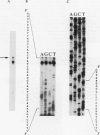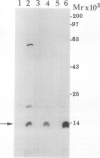Abstract
In Hevea brasiliensis, the rubber particle in the laticiferous vessel is the site of rubber (cis-1-4-polyisoprene) biosynthesis. A 14 kilodalton protein, rubber elongation factor (REF), is associated with the rubber particle in a ratio of one REF to one rubber molecule (Dennis M, Henzel W, Bell J, Kohr W, Light D [1989] J Biol Chem 264: 18618-18628; Dennis M, Light D [1989] J Biol Chem 264: 18608-18617). To obtain more information concerning the function of REF and its synthesis and assembly in the rubber particle, we isolated cDNA clones encoding REF. We used antibodies to REF to screen a Hevea leaf γgt11 cDNA expression library and obtained several positive clones. Sequence analysis of the REF cDNA clones showed that the REF mRNA contains 121 nucleotides of 5′-nontranslated sequences and a 205 nucleotide 3′-nontranslated region. The open reading frame encodes the entire 14 kilodalton REF protein without any extra amino acids (Dennis M, Henzel W, Bell J, Kohr W, Light D [1989] J Biol Chem 264: 18618-18628). The REF cDNA was subcloned in pGEM-3Z/-4Z and expressed in vitro. The translation product is a 14 kilodalton protein that can be immunoprecipitated with antibodies to REF. Addition of microsomal membranes to the in vitro translation product did not alter the mobility of the REF protein. This, and the sequence data, indicate that REF is not made as a preprotein. Our results suggest that REF is synthesized on free polysomes in the laticifer cytoplasm and that assembly of the rubber particles is likely to occur in the cytosol.
Full text
PDF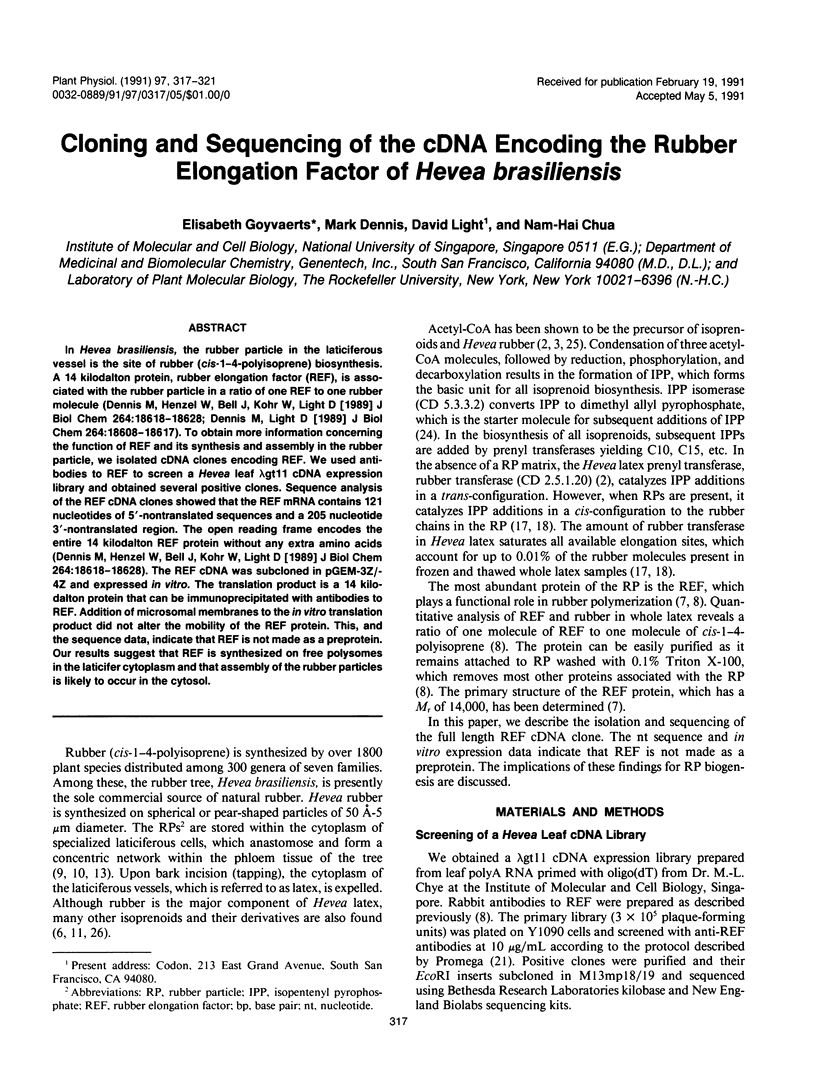
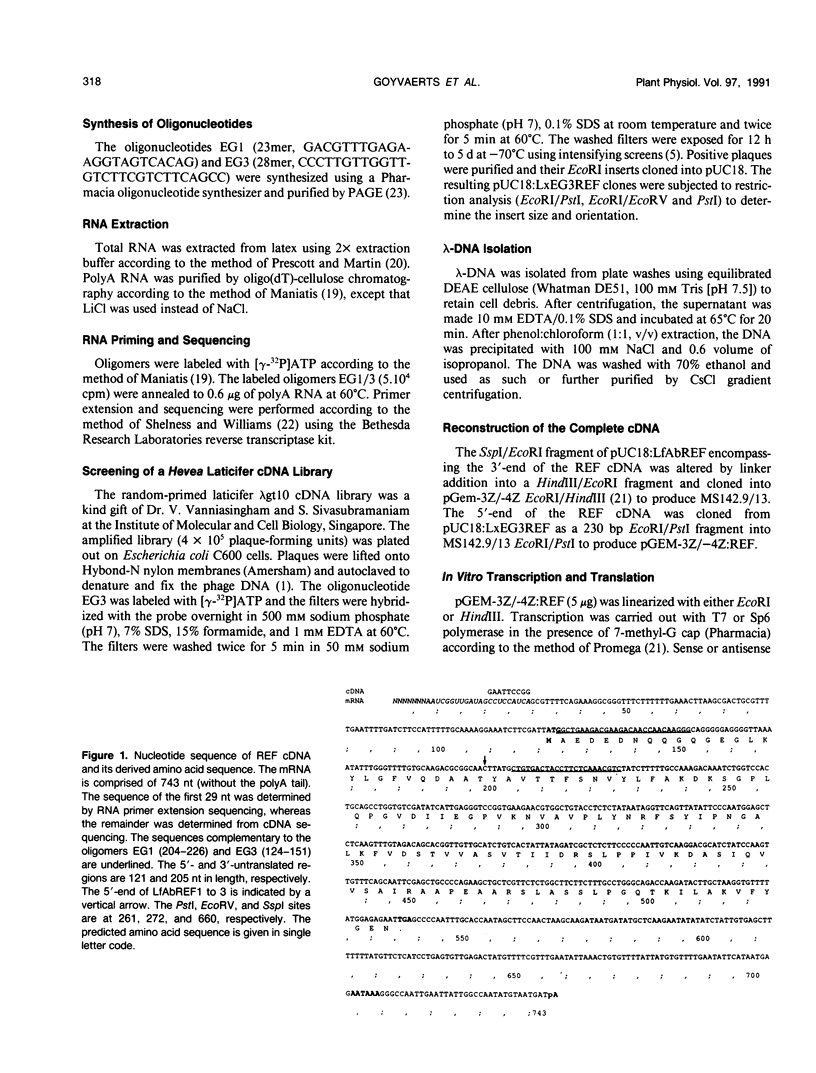
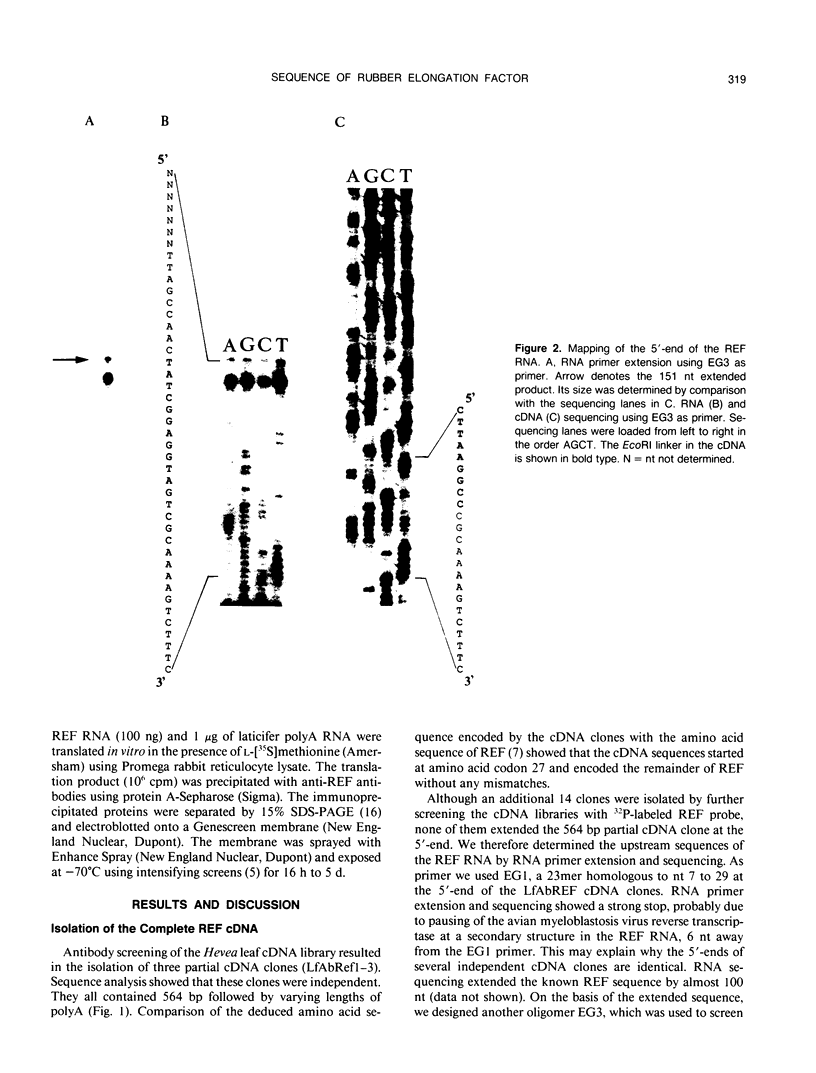
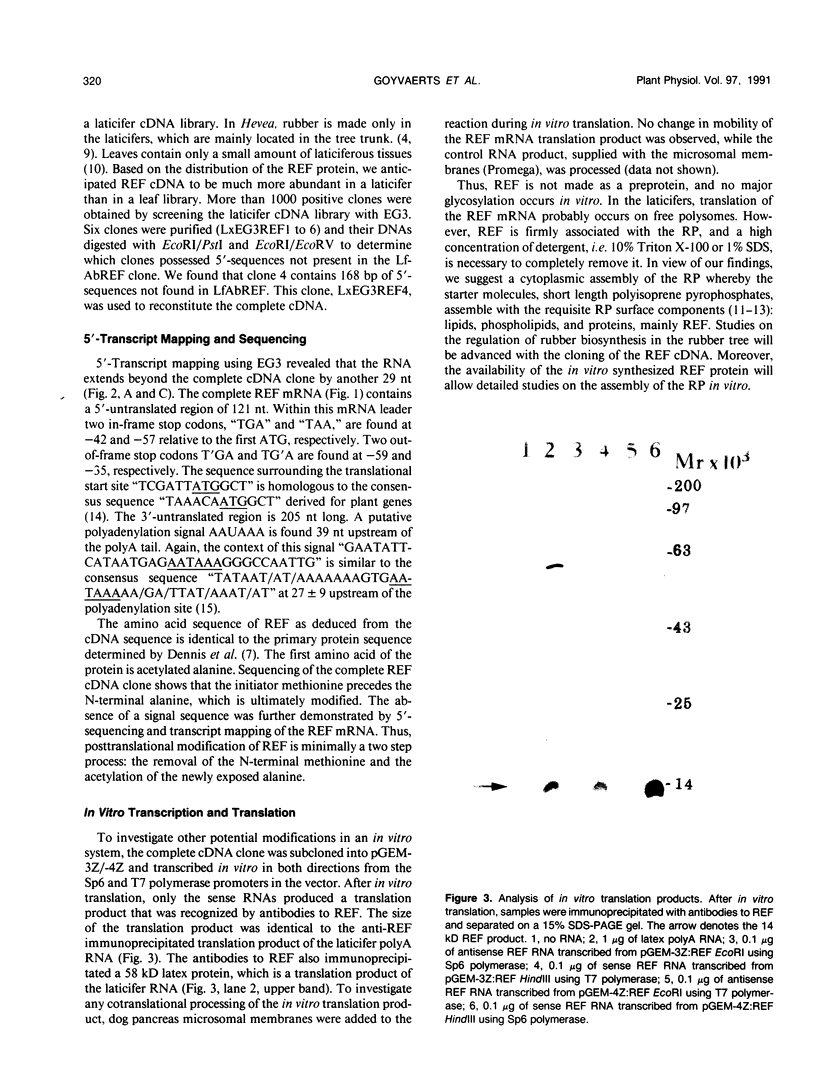
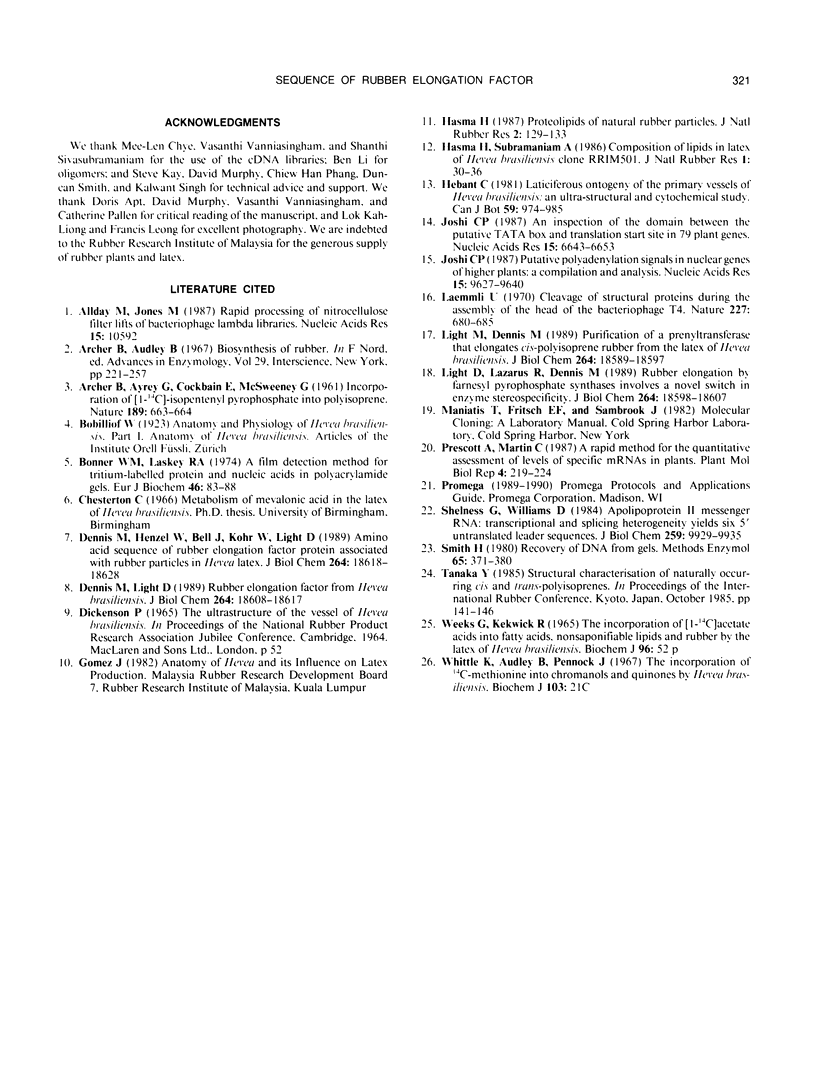
Images in this article
Selected References
These references are in PubMed. This may not be the complete list of references from this article.
- Allday M. J., Jones M. D. Rapid processing of nitrocellulose filter lifts of bacteriophage lambda libraries. Nucleic Acids Res. 1987 Dec 23;15(24):10592–10592. doi: 10.1093/nar/15.24.10592. [DOI] [PMC free article] [PubMed] [Google Scholar]
- Bonner W. M., Laskey R. A. A film detection method for tritium-labelled proteins and nucleic acids in polyacrylamide gels. Eur J Biochem. 1974 Jul 1;46(1):83–88. doi: 10.1111/j.1432-1033.1974.tb03599.x. [DOI] [PubMed] [Google Scholar]
- Dennis M. S., Light D. R. Rubber elongation factor from Hevea brasiliensis. Identification, characterization, and role in rubber biosynthesis. J Biol Chem. 1989 Nov 5;264(31):18608–18617. [PubMed] [Google Scholar]
- JACOBSON B., DAVIDSON E. A. Chemical oxidation of uridine diphosphate-glucose to uridine diphosphate-glucuronic acid. Nature. 1961 Feb 25;189:663–663. doi: 10.1038/189663a0. [DOI] [PubMed] [Google Scholar]
- Joshi C. P. An inspection of the domain between putative TATA box and translation start site in 79 plant genes. Nucleic Acids Res. 1987 Aug 25;15(16):6643–6653. doi: 10.1093/nar/15.16.6643. [DOI] [PMC free article] [PubMed] [Google Scholar]
- Joshi C. P. Putative polyadenylation signals in nuclear genes of higher plants: a compilation and analysis. Nucleic Acids Res. 1987 Dec 10;15(23):9627–9640. doi: 10.1093/nar/15.23.9627. [DOI] [PMC free article] [PubMed] [Google Scholar]
- Laemmli U. K. Cleavage of structural proteins during the assembly of the head of bacteriophage T4. Nature. 1970 Aug 15;227(5259):680–685. doi: 10.1038/227680a0. [DOI] [PubMed] [Google Scholar]
- Light D. R., Dennis M. S. Purification of a prenyltransferase that elongates cis-polyisoprene rubber from the latex of Hevea brasiliensis. J Biol Chem. 1989 Nov 5;264(31):18589–18597. [PubMed] [Google Scholar]
- Light D. R., Lazarus R. A., Dennis M. S. Rubber elongation by farnesyl pyrophosphate synthases involves a novel switch in enzyme stereospecificity. J Biol Chem. 1989 Nov 5;264(31):18598–18607. [PubMed] [Google Scholar]
- Shelness G. S., Williams D. L. Apolipoprotein II messenger RNA. Transcriptional and splicing heterogeneity yields six 5'-untranslated leader sequences. J Biol Chem. 1984 Aug 10;259(15):9929–9935. [PubMed] [Google Scholar]



